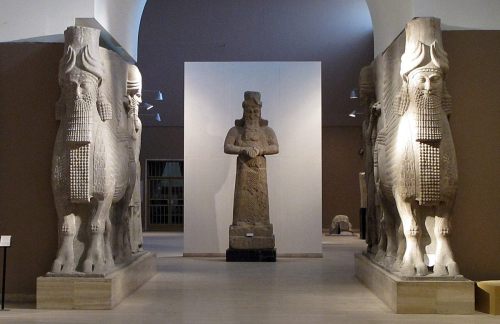Morning Star, Evening Star, Ishtar
“Already, before the days of Sargon of Accad and the compilation of the great Babylonian work on astronomy, it had been discovered that the evening and morning stars were one and the same.
Not only, therefore, was Istar the evening star, the companion of the moon; she became also the morning star, the companion and herald of the sun.
It was thus that she assumed the attributes and titles of a male deity, since Dun-khud-e, “the hero who issues forth at daybreak,” was both a god and the morning star. As the morning star, therefore, Istar was a god and the successor of a god, so that it is not wonderful if the bewildered Semite, who found no visible sign of gender in the name of the divinity he had adopted, should sometimes have regarded Istar as the masculine form of Ashtoreth.
Some of the early Accadian titles of Istar belong to her as the star of the morning, though the title of “Lady of Rising,” given her as “the wife of Anu” (H.C. Rawlinson, The Cuneiform Inscriptions of Western Asia, 1886, ii. 54,15), would apply equally to the evening star.
In making her the wife of the Sky-god, the mythologists were only expressing in another way what the poet of the legend of the seven evil spirits had denoted by saying that Istar set up her throne by the side of Anu.

Messenger of the gods, Nebo. From a statute in the British Museum.
George Rawlinson – Source: Seven Great Monarchies Of The Ancient Eastern World, Vol 1. (1875)
http://www.gutenberg.org/files/17323/17323-h/17323-h.htm#linkBimage-0018
More usually, however, the relation between Istar and Anu was regarded as a genetic one; she was the daughter, rather than the wife, of the Sky. At times, again, she is called the daughter of the Moon-god, the Moon-god being here the larger body which begets the smaller star.
It is possible that these different views about her descent are derived from different centres of worship; that which made her the daughter of Sin having its origin in Ur, while that which made her the daughter of Anu emanated from Erech.
At any rate, her connection with the Moon-god seems to have been the more popular view in Semitic times.
As a planet, Istar’s ordinary name was the Accadian Dilbat, or “Announcer.” One of the smaller cities of Babylonia had the same name, and was probably the chief seat of the worship of the goddess under this particular form. It is obvious that the name must have been originally applied not to the evening but to the morning star.
It was only as the announcer of day and the herald of the sun that Venus could be the Accadian representative of the Semitic Nebo. The other messengers of the gods were male: and in Semitic times the fact that there had once been a female messenger was forgotten.
The name of Dilbat, it is true, remained, but only as the name of a star; the place of lstar as the herald of the Sun-god was taken, at Babylon at all events, by Nebo.
It is possible that the records of the city of Dilbat, if ever they are recovered, will show us that this was the primal home of the name of Istar itself, and the centre from which it first spread. If so, however, it was little more than the primal home of the goddess’s name.
The real source and centre of the worship of Istar at the dawn of the historical period, the starting-point from which it was handed on to the Semites and became overlaid with Semitic beliefs and practices, was not Dilbat, but Erech.
In the days when Erech had been a leading state, when the cult of the Sky-god had been carried by its people to other parts of the Eastern world, the cult of Istar also had been carried with it. Wherever the worship of Anu had gone, the worship of Istar, the daughter of Anu, went too.”
A.H. Sayce, Lectures on the Origin and Growth of Religion as Illustrated by the Religion of the Ancient Babylonians, 5th ed., London, 1898, pp. 258-60.

